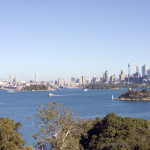 In an article for the website Property Update, George Raptis offers a few brilliant insights into how the property cycle will move towards its peak and what may be the immediate and distant implications of the apartment boom.
In an article for the website Property Update, George Raptis offers a few brilliant insights into how the property cycle will move towards its peak and what may be the immediate and distant implications of the apartment boom.
A tide of apartments in Sydney soon
Raptis confirms that about 130 projects will be up in Sydney alone in the next 5 years. This will pave way for about 25,000 fresh apartments. Out of these, 4,500 apartments will be made available in the much-touted Sydney CBD area.
Construction sector buoyed up
Value growth in the capital markets has made development projects economically viable for developers. Thus, they have shaken off their long-time slumber and have begun with rampant development activity of late.
Chinese investors are having a ball
Add to this, a large number of Chinese investors who are cashing on the “appreciated Yuan” and putting in their presence vigorously in the apartment market here. Take for instance, their investment of $600 million in development sites panning across Sydney.
Of course, they are only going to get more prolific because of a shaky equity market back home and severe restrictions in the Chinese domestic real estate.
While government has drawn flak from the local developers, who cite that overseas investors do not have to go through pre-sales restrictions like them, the Chinese investors surely aren’t complaining.
So where is this leading to?
Now, how are things likely to shape in the wake of such huge tide of apartments? While it is true that Sydney will have 9,000 more apartments by 2014, Raptis does not see a case of oversupply because this tide will lose its force in compensating for the undersupply of years.
Raptis however concedes that in a few places south of Sydney, there might be a case of oversupply. Actually, the “oversupply” scenario might also present itself because construction activity in the next couple of years will only accelerate from here, backed by strong indications from a buoyant Sydney property market.
Herd mentality in operation
This is nothing unheard of though. Its the routine grind of a peaking property market wherein investors look to seize the moment for the fear of missing out. The “herd mentality” kicks in and many buy because their neighbours or friends are buying too. Some buy in the pre-construction phase, looking to make a quick buck, while others buy never to settle the deal.
Lenient lending structure
A baby’s tendencies can be judged in the cradle itself and from the looks of it; Sydney property market buoyancy is likely to make banks more lenient with their lending structures. You will see more cases where banks are willing to forego upfront costs, fee, and quite willing to negotiate on the interest rates too (not that we have any complaints with the present interest rates).
However it may be poised for the moment, things will come back to normalcy once the Reserve Bank begins to consolidate by raising the interest rates again.
At the moment, contests Raptis, population growth and low interest rates will trigger capital city value growth and construction activity for at least some time. In a speculation-rich environment, there will always be a few grounded by their greed but overall a unique investment opportunity will by and large present itself.
Only investment-grade properties are worth it
Raptis recommends that it will be worthwhile to invest only in investment-grade properties which exhibit capital growth and are always in the good books of owner-occupiers. He ends his article by asserting that property booms (even the perceived ones) do not last too long and it is always wise to maximise benefits and budget reasonably for a downturn.
You can read the original article here
I can only applaud Raptis for putting things so smartly ahead of a wide repertoire of readers interested in the property market. For the first time, Sydney has crossed Melbourne in terms of capital city value growth and this augurs really well for the harbour city.
I think Sydney will benefit the most from the influx of overseas investors and its development-ready lands, Broadacre plots, brilliant urban centres and its characteristic resilience in the face of adversity will do enough to arrest their constant attention.
Compliance hurdles aplenty
At the same time, I think that red-tape and compliance hurdles may catch up with the intent of developers every so often, also infuriating the Yuan-high investors in due course of time.
Construction activity can only lead to oversupply once it is allowed to let loose, something I don’t see happening in an environment where developers may feel restricted from time to time by one clause or another.
Which one do you see winning in Sydney in the “detached house versus apartment” debate?











